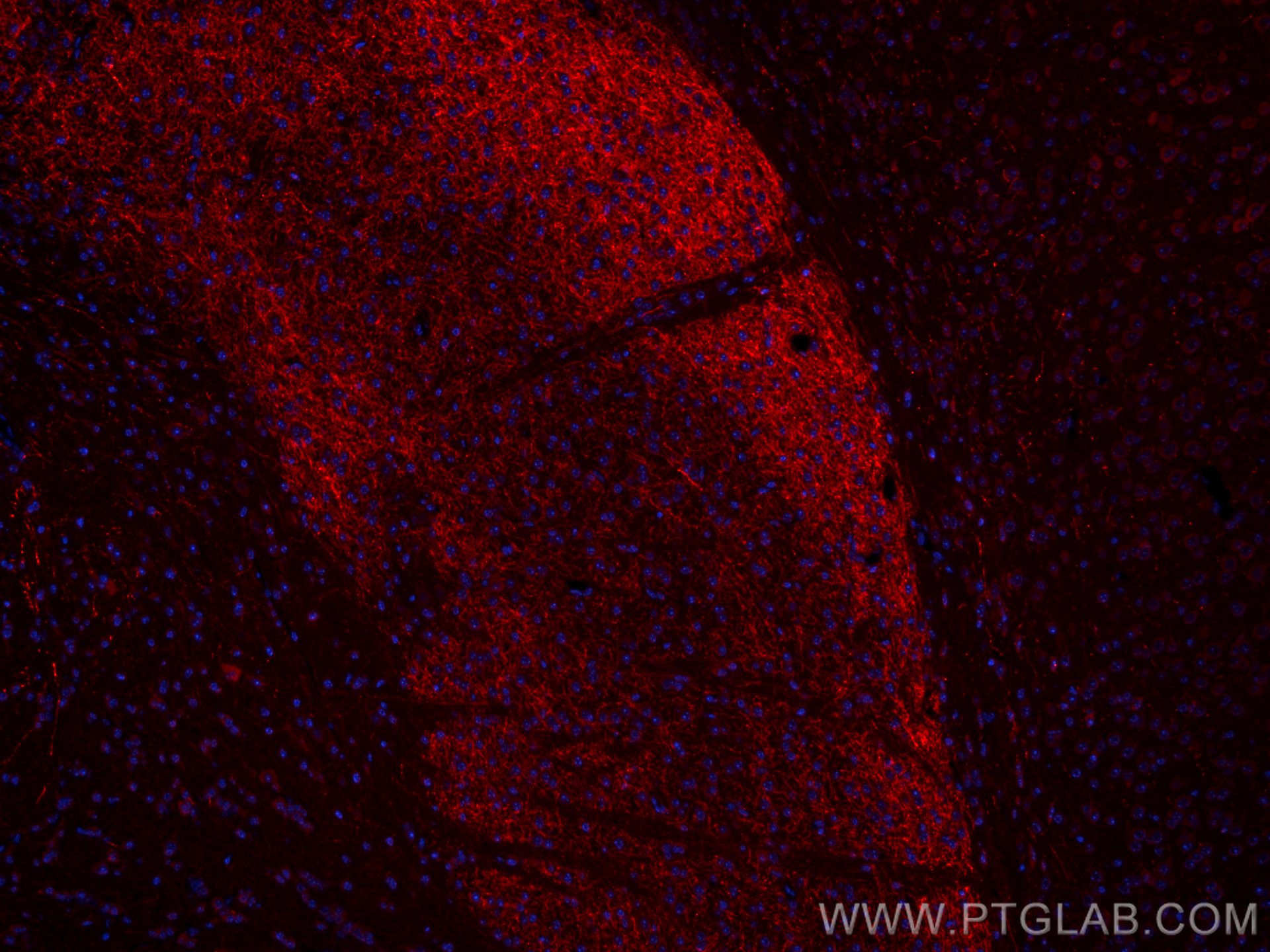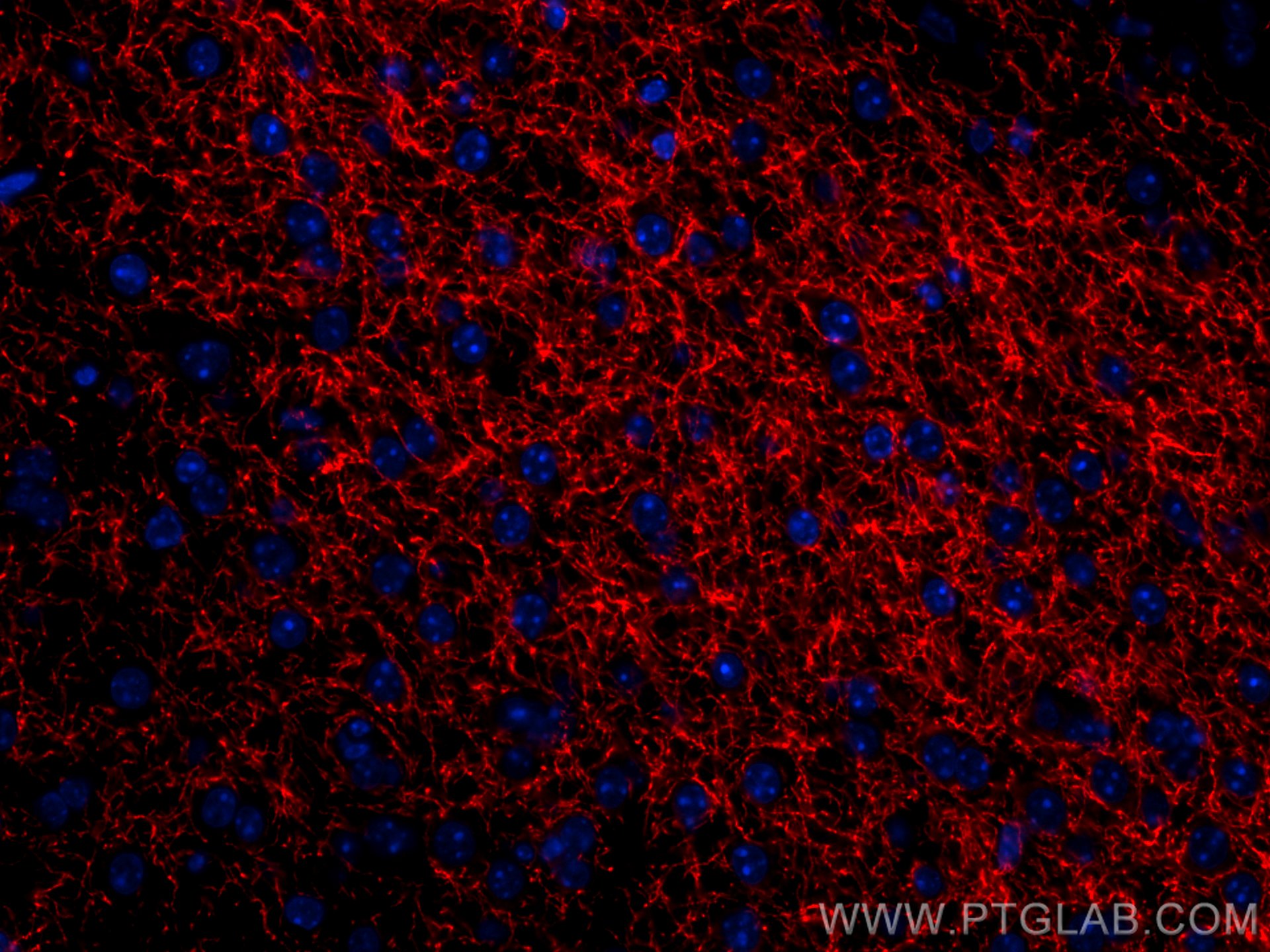Validation Data Gallery
Tested Applications
| Positive IF-P detected in | mouse brain tissue |
Recommended dilution
| Application | Dilution |
|---|---|
| Immunofluorescence (IF)-P | IF-P : 1:50-1:500 |
| It is recommended that this reagent should be titrated in each testing system to obtain optimal results. | |
| Sample-dependent, Check data in validation data gallery. | |
Product Information
CL594-25859 targets TH in IF-P applications and shows reactivity with human, mouse, rat samples.
| Tested Reactivity | human, mouse, rat |
| Host / Isotype | Rabbit / IgG |
| Class | Polyclonal |
| Type | Antibody |
| Immunogen |
CatNo: Ag23075 Product name: Recombinant human TH protein Source: e coli.-derived, PET30a Tag: 6*His Domain: 1-260 aa of BC104967 Sequence: MPTPDATTPQAKGFRRAVSELDAKQAEAIMSPRFIGRRQSLIEDARKEREAAVAAAAAAVPSEPGDPLEAVAFEEKEGKAMLNLLFSPRATKPSALSRAVKVFETFEAKIHHLETRPAQRPRAGGPHLEYFVRLEVRRGDLAALLSGVRQVSEDVRSPAGPKVPWFPRKVSELDKCHHLVTKFDPDLDLDHPGFSDQVYRQRRKLIAEIAFQYRHGDPIPRVEYTAEEIATWKEVYTTLKGLYATHACGEHLEAFALLER 相同性解析による交差性が予測される生物種 |
| Full Name | tyrosine hydroxylase |
| Calculated molecular weight | 528 aa, 59 kDa |
| Observed molecular weight | 50-55 kDa |
| GenBank accession number | BC104967 |
| Gene Symbol | TH |
| Gene ID (NCBI) | 7054 |
| RRID | AB_2919876 |
| Conjugate | CoraLite®594 Fluorescent Dye |
| Excitation/Emission maxima wavelengths | 588 nm / 604 nm |
| Form | |
| Form | Liquid |
| Purification Method | Antigen affinity purification |
| UNIPROT ID | P07101 |
| Storage Buffer | PBS with 50% glycerol, 0.05% Proclin300, 0.5% BSA{{ptg:BufferTemp}}7.3 |
| Storage Conditions | Store at -20°C. Avoid exposure to light. Stable for one year after shipment. Aliquoting is unnecessary for -20oC storage. |
Background Information
TH(Tyrosine 3-monooxygenase) converts L-tyrosine to L-3,4-dihydroxyphenylalanine (L-DOPA), the essential and rate-limiting step to formation of dopamine and other catecholamines. TH plays an important role in the physiology of adrenergic neurons and can be used as a marker for dopaminergic and noradrenergic neurons. This protein has 6 isoforms produced by alternative splicing with the MW from 44 kDa to 58 kDa.
Protocols
| Product Specific Protocols | |
|---|---|
| IF protocol for CL594 TH antibody CL594-25859 | Download protocol |
| Standard Protocols | |
|---|---|
| Click here to view our Standard Protocols |


